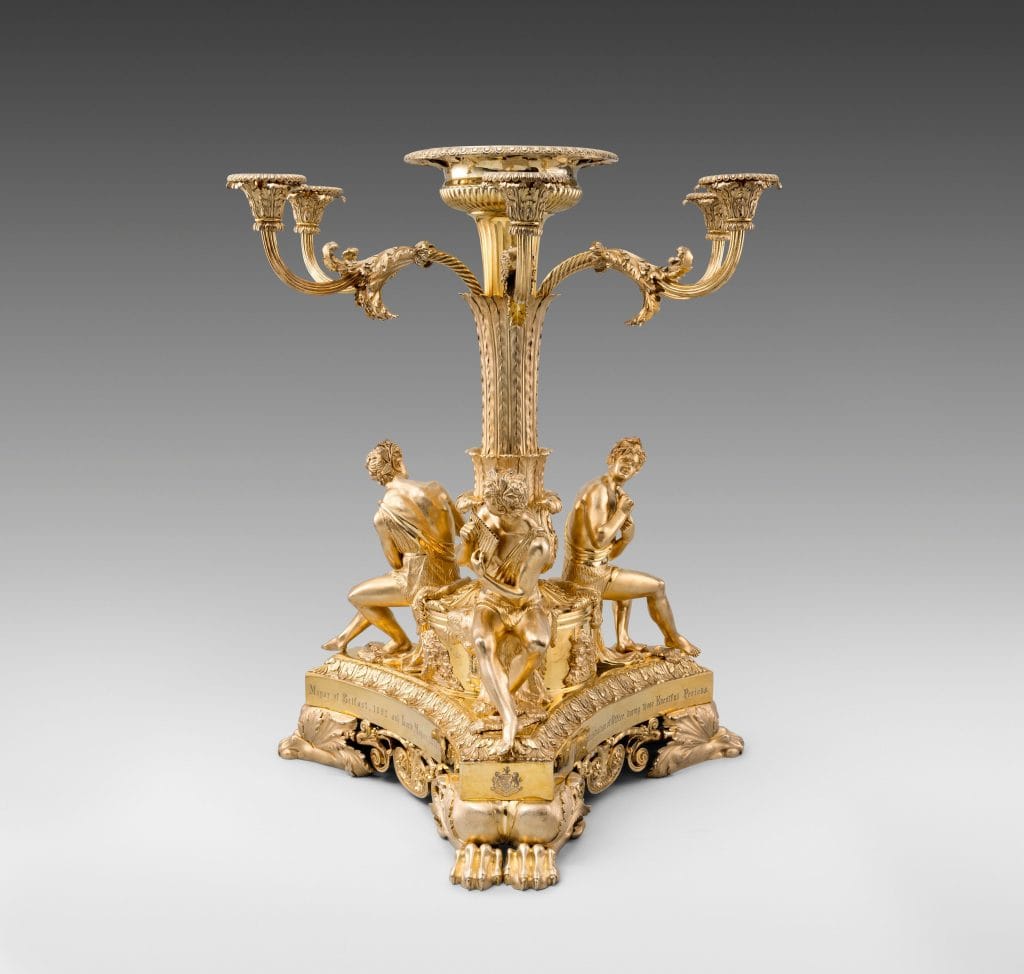The Georgians at LAW
Written by Silke Lohmann | 3 July 2022
Bridgerton may have pushed the Georgians to a new height of popularity with the general public, but London Art Week dealers have been championing Georgian artists for decades.
Under the reign of the four King Georges - I, II, III and IV - from 1714 to 1830, a period known as The Long Century, artists were thriving. Due to industrialisation, growth of trade and innovations, Britain established itself as an international power. As a result the social life of people improved and with it the demand for art and many great British painters emerged, among them Sir Joshua Reynolds, Thomas Gainsborough, Joseph Mallord William Turner, Angelica Kauffman, Johan Zoffany and William Hogarth. The Royal Academy of Arts on Piccadilly was founded through a personal act of King George III in 1768 and Reynolds was its first president.
Visit London Art Week dealers to see some of the highlights of art from the Georgian period.
One of the exhibitions not to be missed covering almost exclusively this period is Miles Wynn Cato's British Art Rediscovered: Unseen Pictures, Untold Stories at Gallery Ten, Cromwell Place (from Tuesday, 5th July). This ground-breaking exhibition includes 14 rediscovered paintings and drawings by some of the most important British artists of the 18th century - Thomas Lawrence, Thomas Jones, Angelica Kauffman, Joseph Wright of Derby and remarkably, five rediscovered pictures by Thomas Gainsborough. Over his 30-year career, Miles has a solid record of finding 'sleepers', and all of these works have been long lost, mis-catalogued, or previously unrecorded. The pictures are also notable for stylistic reasons, or because the sitter or scene is exceptionally rare. In two instances (Gainsborough and Lawrence), the image on view is one of the artist's earliest known works to survive - so these significant new finds will shed fresh light on the early technique of these outstanding artists. A particular highlight are three paintings by early female artists, including a lost painting by Angelica Kauffman.

This fascinating landscape may well be the painting Thomas Jones (1742 - 1803) described in his Memoirs of 1776 as: 'An Idea Taken from Ye Wye. For Taylor 8Gns'. Here, Jones includes beautiful scenery from his much-favoured Wye valley, but he combines it with Tivolian waterfalls and the Roman Pont du Gard aqueduct. It is a picture that sheds new light on the enormous breadth and originality of Jones's artistic imagination. It also demonstrates how highly Jones regarded his native Wales in relation to Italy, a country he yearned to visit and where he would soon make his home.

Lowell Libson & Jonny Yarker Ltd are showing several works by Georgian artists including the portrait of Mrs Margaret Smith by George Romney (1734 - 1802). Painted in 1777 it is a classic example of how portraiture was thriving during this period with many sitters wanting to show off their newly found status in British society.

A monumental early 19th century six-light candelabrum centrepiece with a piping satyr, made by Paul Storr (1771-1844), will take centre stage at Koopman Rare Art. This model of triform centrepiece with piping satire seems to have been first made in 1809 for the Prince Regent. A pair is still in the Royal Collection, which had been invoiced as "a very large Ornament for Center of the table", and for an astonishing £2.017 16s. The figures of the satyrs were probably modelled by sculptor William Theed Il, a member of the Royal Academy, and may have been modelled on a Renaissance bronze by Andrea Riccio (1470 - 1532).

Guy Peppiatt Fine Art will have a lively drawing on view by Thomas Rowlandson (1756 - 1827) of The Masked Ball. These were hugely popular at the time and provide a great portrait of society. Balls were no longer held only at private residences, but also at specially designed assembly rooms. Illustrations of these events were doubtless closely inspected when they were published.

At the same time, artists were also fascinated by 'normal life' and village scenes were particularly popular. One of the highlights is an important finished study by Sir David Wilkie (1785 - 1841) for The Village Festival (or Holiday), which is a well-known work in the collection of Tate Britain. Wilkie continued working on this version even after the larger one was sold to John Julias Angerstein (and in so doing making Wilkie the first living artist to enter the National Gallery) and has the same exquisite detail. The condition is extraordinary, it is very well preserved and has suffered no interventions over the years. It can be viewed at Patrick Bourne & Co as part of an exhibition of important British artists collected especially for LAW.